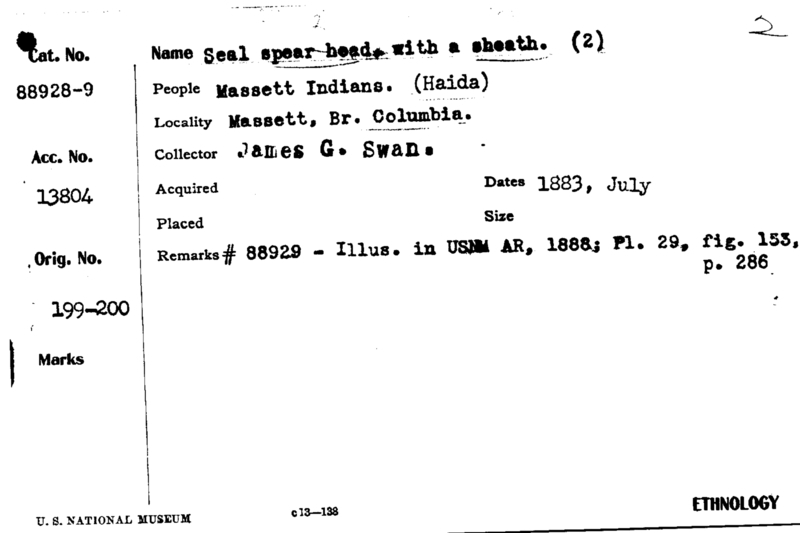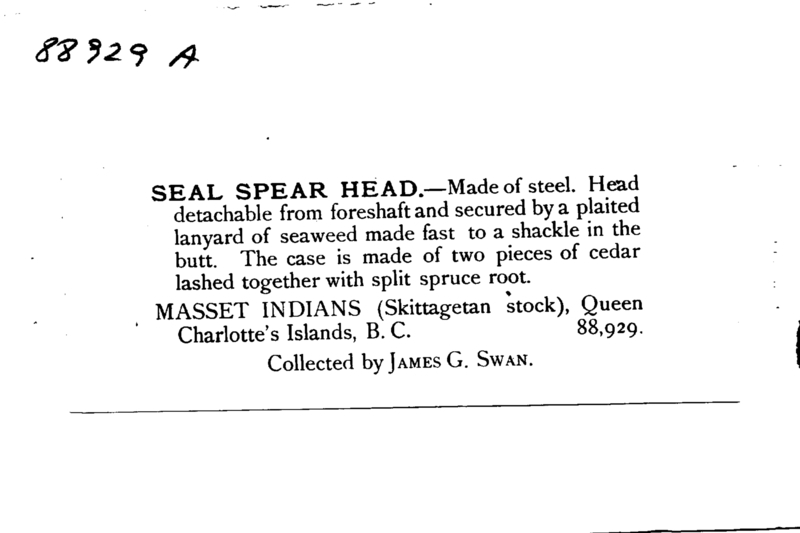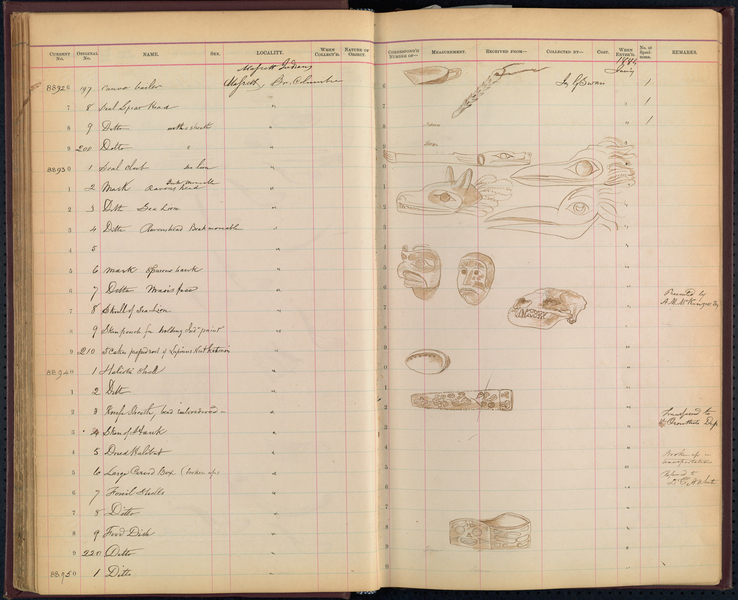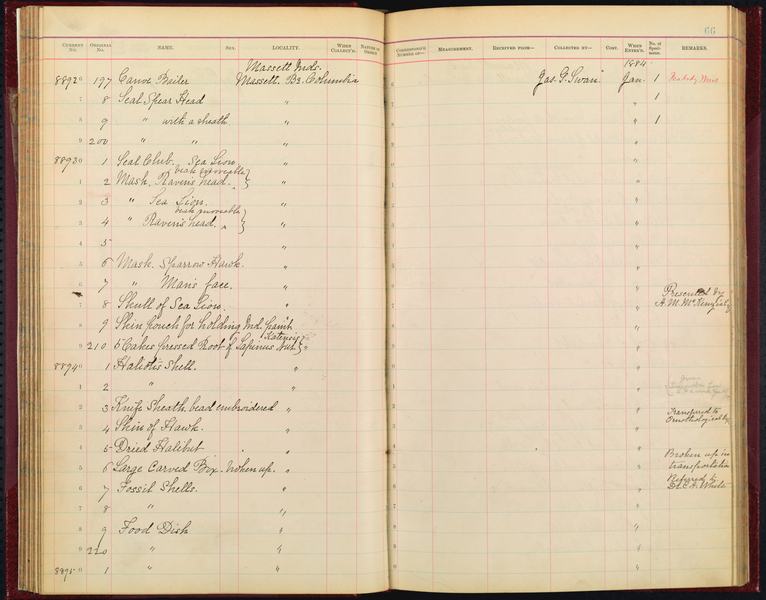Seal Harpoon Head With Sheath Item Number: E88929-0 from the National Museum of Natural History





Notes
From card: "#88929 - Illus. in USNM AR, 1888; Pl. 29, fig. 153, p. 286." From 19th or early 20th century exhibit label with card: "Seal Spear Head. - Made of steel. Head detachable from foreshaft and secured by a plaited lanyard of seaweed made fast to a shackle in the butt. The case is made of two pieces of cedar lashed with split spruce root. Masset Indians (Skittagetan stock), Queen Charlotte's Islands, B.C. Collected by James G. Swan."Harpoon head sheath is on loan to the Anchorage Museum at Rasmuson Center, from 2010 through 2027. Only sheath on loan. Harpoon head, which was not located during the 1970's inventory, is not included on loan.Source of the information below: Smithsonian Arctic Studies Center Alaska Native Collections: Sharing Knowledge website, by Aron Crowell, entry on harpoon head sheath http://www.alaska.si.edu/record.asp?id=624, retrieved 5-6-2012: Sheath for harpoon head, Haida. A wooden sheath with a seal-like "tail": encased the barbed tip of a seal harpoon when it was not in use. Legendary seal hunters from Gitadju' became lost in fog and arrived at the undersea house of the Ocean People. There a supernatural being dressed in rings of woven cedar bark taught them spirit dances to perform during potlatch ceremonies. On the way back home the men capsized their canoe but managed to reach shore, and when one blew on his wet harpoon sheath it made a whistling sound like the voice of the dancing spirit. Haida celebrants used wooden whistles to re-create this sound and dressed in bark rings as their ancestors had been shown.
Item History
- Made in Masset, British Columbia, Canada
- Collected by James G. Swan in Masset, British Columbia, Canada during July 1883
- Received on December 21, 1883
What
- Name
- Seal Harpoon Head With Sheath
- Identification Number
- E88929-0
- Type of Item
- harpoon sheath
Who
- Culture
- Haida
- Field Collector
- James G. Swan
Where
- Holding Institution
- National Museum of Natural History
- Made in
- Masset, British Columbia, Canada
- Collected in
- Masset, British Columbia, Canada
When
- Collection Date
- during July 1883
- Acquisition Date
- on December 21, 1883
Other
- Accession Number
- 013804